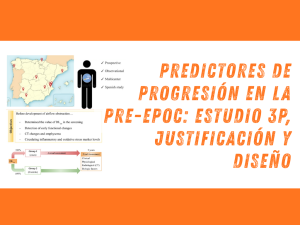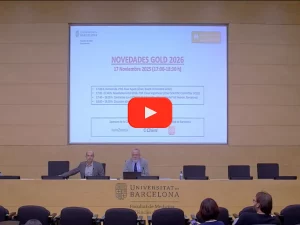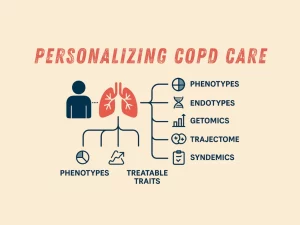Microbiological Monitoring in Therapeutic Trials in Chronic Obstructive Pulmonary Disease

Background: Microbiological Monitoring in Therapeutic Trials in Chronic Obstructive Pulmonary Disease
Allinson and colleagues recently reported in the Journal that long-term treatment with doxycycline did not significantly reduce the exacerbation rate in patients with chronic obstructive pulmonary disease (COPD) (1). We would like to offer some comments to hopefully enrich the interpretation of these results.
Some comments to hopefully enrich the interpretation of these results
First, the characteristics of the study population are worth noting
All patients had frequent exacerbations (median of two exacerbations in the previous 1 yr), and 60% of them had chronic bronchitis.
This subgroup of patients with COPD frequently experience chronic bronchial infection (CBI) by potentially pathogenic microorganisms during times of clinical stability, including Haemophilus influenzae, Streptococcus pneumoniae, and Moraxella catarrhalis (2). CBI in these patients is associated with higher incidences of exacerbations and pneumonia (3), which are often sensitive to doxycycline (4). Unfortunately, Allinson and colleagues did not report microbiological sputum data, so the influence of CBI on the potential preventive effect of doxycycline on exacerbations could not be analyzed.
Second, it is of note that long-term doxycycline treatment was actually effective in preventing exacerbations in the subgroups of patients with more severe COPD
Even though the overall results were negative, it is of note that long-term doxycycline treatment was actually effective in preventing exacerbations in the subgroups of patients with more severe COPD (rate ratio, 0.36; 95% confidence interval, 0.15–0.85; P = 0.019) and/or less peripheral eosinophilia (rate ratio, 0.50; 95% confidence interval, 0.29–0.84; P = 0.01).
Previous studies have shown that the prevalence of CBI is higher in patients with more severe COPD and in those with lower blood eosinophil levels (5).
Thus, it is possible that the significant effects seen in patients with more severe COPD and/or lower peripheral eosinophil counts can be due to the long-term effects of doxycycline on CBI without ruling out an additional antiinflammatory effect of doxycycline, as pointed out by the authors.
Conclusions
In summary, we think this study highlights the need for careful microbiological monitoring (and, if possible, analysis of potential pulmonary microbiome changes, i.e., dysbiosis) in future interventional trials in patients with COPD.
Authors
Miguel Angel Martinez-Garcia and Alvar Agusti.
Read more details at
Noticias relacionadas

Predictores de progresión en la pre-EPOC: estudio 3P, justificación y diseño
Conoce el estudio 3P que analiza los factores que predicen la progresión de la pre-EPOC a EPOC en fumadores con espirometría normal.

Vídeo de la Presentación de las Novedades GOLD 2026
Video de la presentación «Novedades GOLD 2026», en el que se trataron, entre otros aspectos: cambios en diagnóstico de la EPOC, tratamiento, comparativa con GESEPOC, etc.

Personalizing COPD care: phenotypes, endotypes, GETomics, the the trajectome, syndemics and treatable traits
Discover how personalized COPD care integrates phenotypes, endotypes, GETomics, trajectome, syndemics, and treatable traits to improve patient outcomes.
Artículos
COPD
- 759578·Alberto Papi et Al.-Relationships between symptoms and lung function in asthma and/or chronic obstructive pulmonary disease in a real-life setting: the NOVEL observational longiTudinal studY
- 759785·Richard Beasley et Al – Prevalence, Diagnostic Utility and Associated Characteristics of Bronchodilator Responsiveness
- 759788·Alvar Agustí, Rod Hughes, Eleni Rapsomaki, Barry Make, Ricardo Del Olmo, Alberto Papi, David Price, Laura Benton, Stefan Franzen, Jørgen Vestbo, Hana Mullerova – The many faces of COPD in real life: a longitudinal analysis of the NOVELTY cohort
- 759883·Alberto Papi, Rosa Faner, Ian Pavord, Federico Baraldi, Vanessa M McDonald, Mike Thomas, Marc Miravitlles, Nicholas Roche, Alvar Agustí. – From treatable traits to GETomics in airway disease: moving towards clinical practice
- 768799·Surya P Bhatt Richard Casaburi Alvar Agusti et Al. Chronic obstructive pulmonary disease: hiding in plain sight, a Statement from the COPD Foundation Medical and Scientific Advisory Committee
Estudios
- 759397·Alberto Sandiumenge et Al.-Systemic Inflammation Differences in Brain-vs. Circulatory-Dead Donors: Impact on Lung Transplant Recipients
- 759578·Alberto Papi et Al.-Relationships between symptoms and lung function in asthma and/or chronic obstructive pulmonary disease in a real-life setting: the NOVEL observational longiTudinal studY
- 759689·Kilian Vellvé et Alt.- Pulmonary vascular reactivity in growth restricted fetuses using computational modelling and machine learning analysis of fetal Doppler waveforms.
- 769273· Singh D, Criner GJ, Agustí A et al. Benralizumab Prevents Recurrent Exacerbations in Patients with Chronic Obstructive Pulmonary Disease: A Post Hoc Analysis
- 769685·Nuria Olvera et Al.- Lung Tissue Multi-Layer Network Analysis Uncovers the Molecular Heterogeneity of COPD
Imagen obtenida en Canva Pro.
